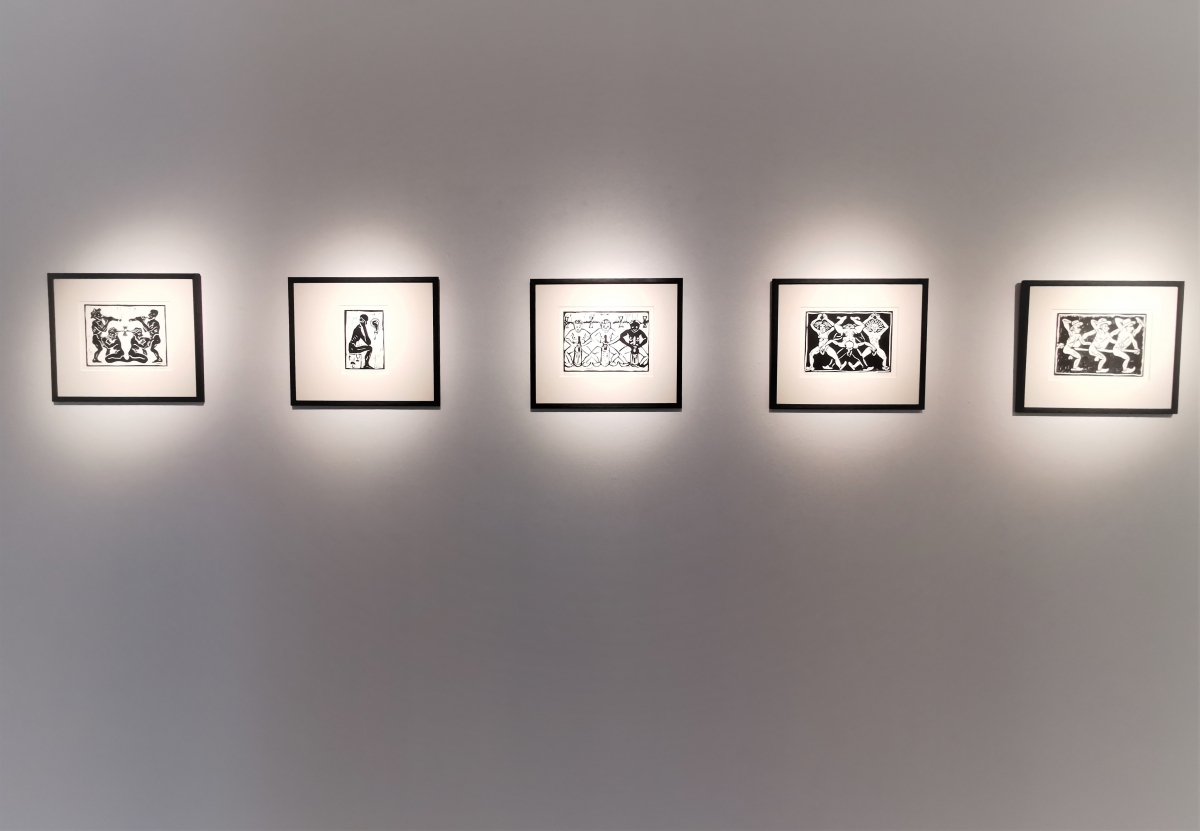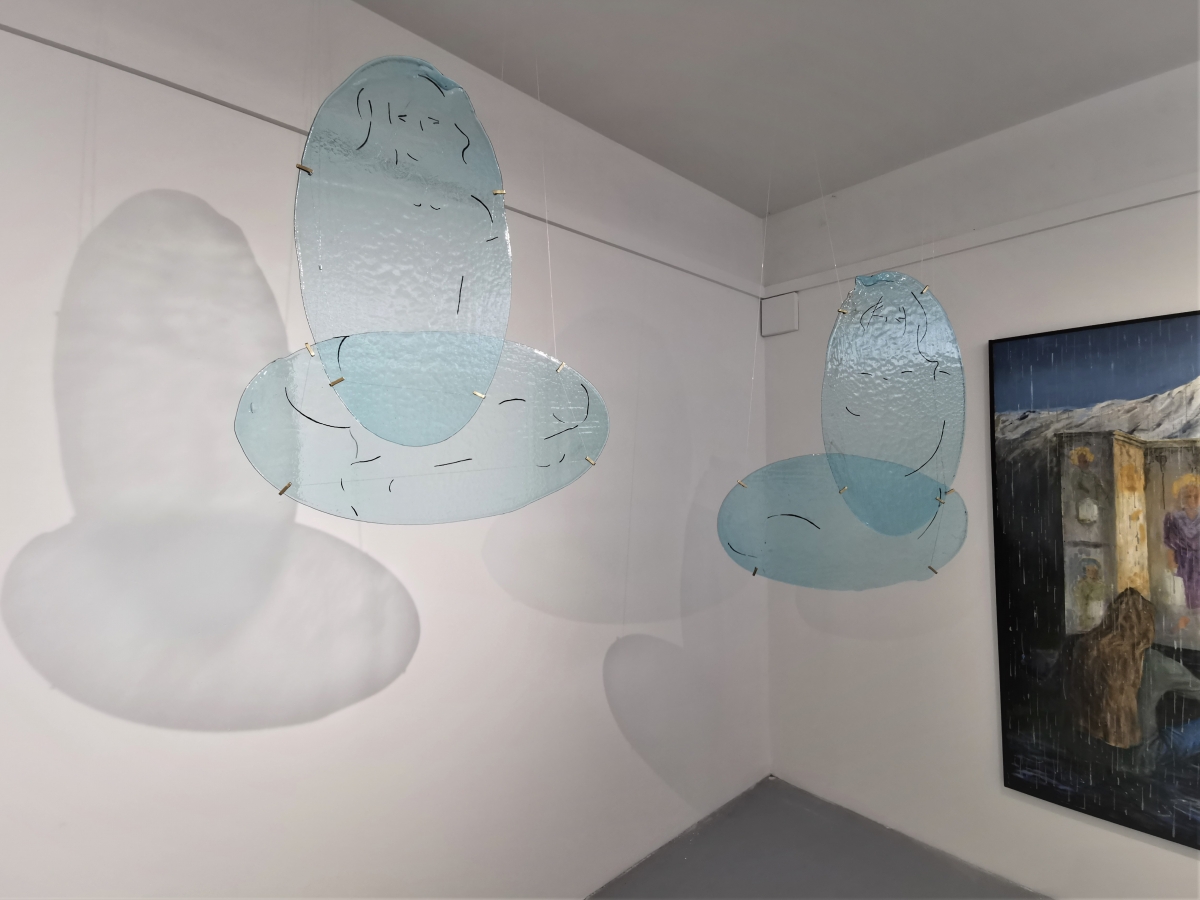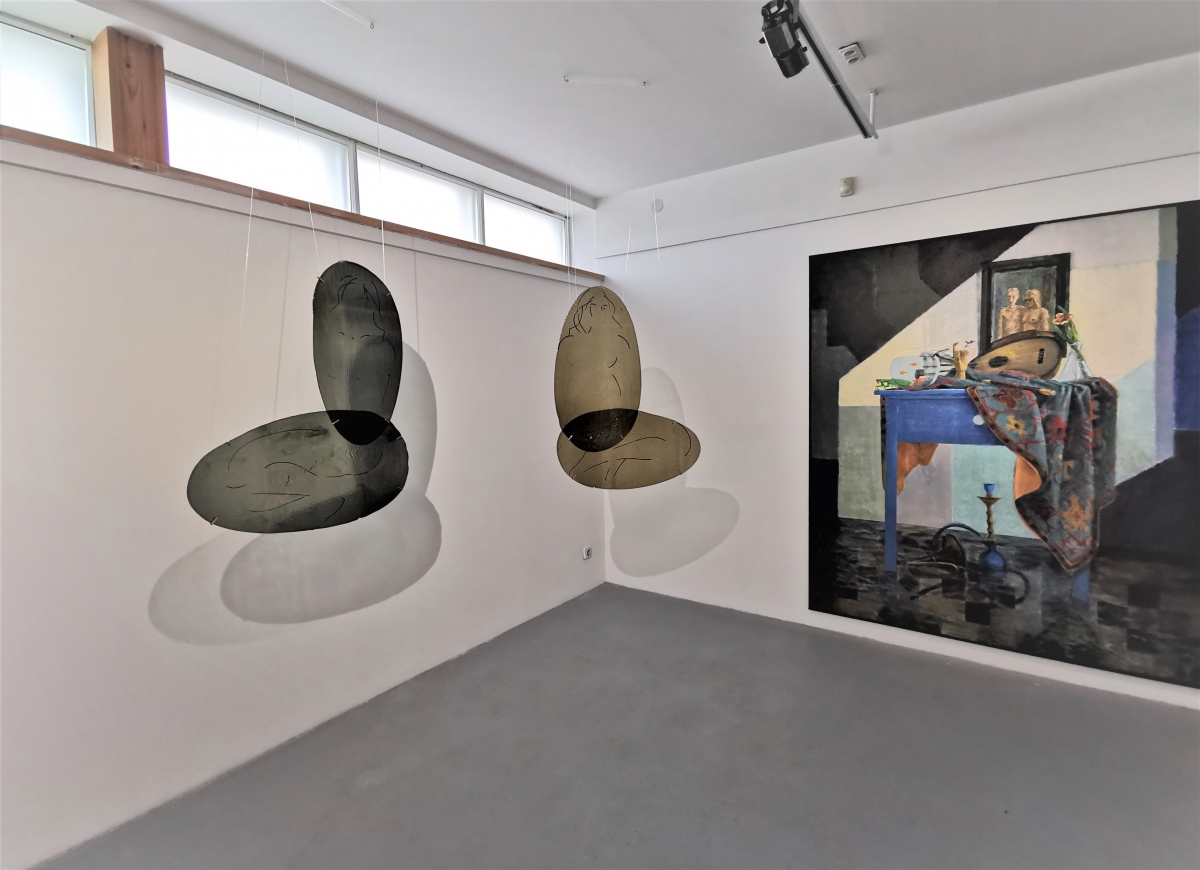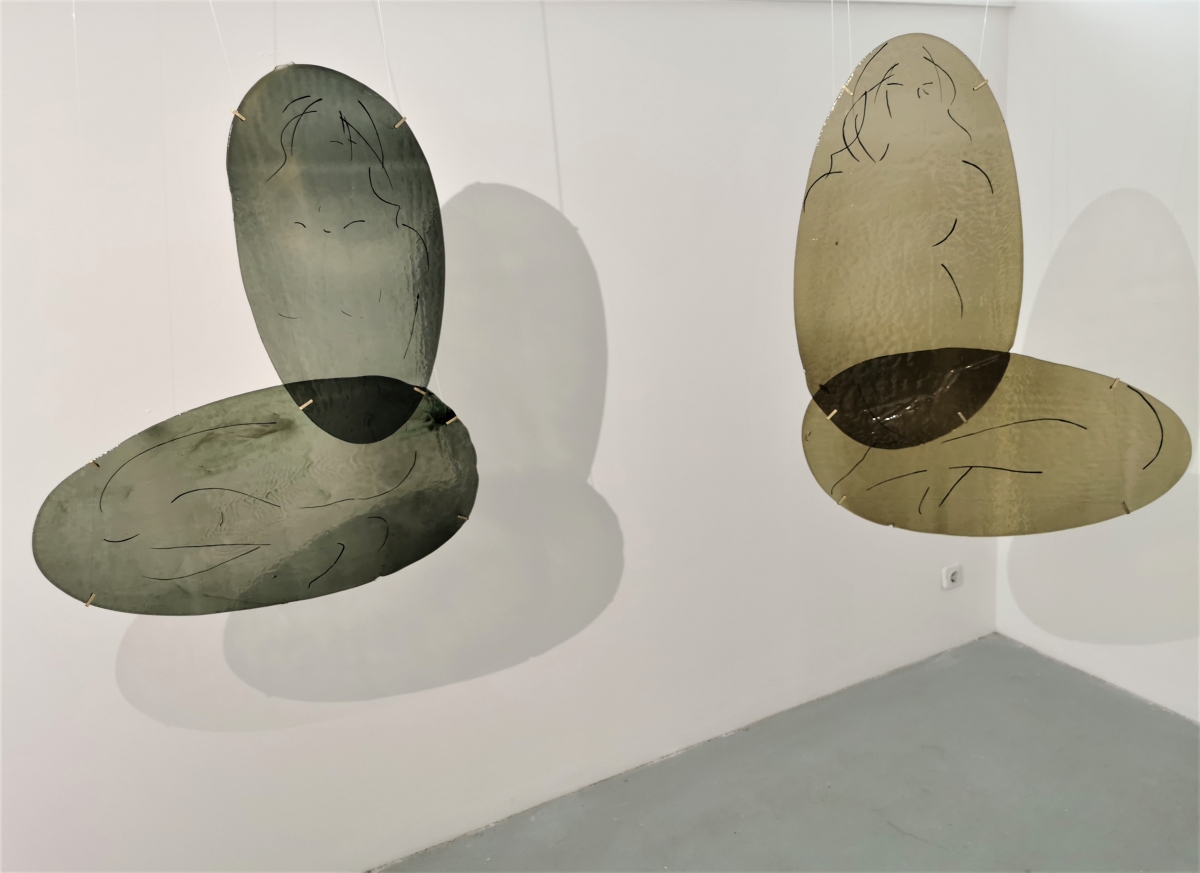‘We don’t make mistakes, just happy accidents’ is an iconic quote from the American painter Bob Ross. A happy accident is as much a philosophy for appreciating life as it is an idea of being perfectly flawed but still focused on life’s beauties. Artists of two different generations, Rimantas Olšauskas and Marija Olšauskaitė, together albeit separately, speak of a similar approach to life, relationships, mortality, and pleasures in their joint exhibition ‘Happy Accident’, which opened on 7 May at the Antanas Mončys House-Museum in Palanga.
Art references art, as if searching for the perfect ally in a game of musical chairs, not knowing that every new quotation and reappropriation only feeds their ghost, their own evil twin. Rimantas Olšauskas takes the artistic liberty of recreating famous pieces by Diego Velázquez and Giorgione. What is so unchangeable in the exalted works of art on which the culture of the civilised world seems to be built? At what point do well-recognised scenes finally become the public domain? We live in a world of abundance, be it images, stories or even talent, and yet the collective imagination is starting to reach its limits. It seems that Rimantas would not shy away from accelerating our feeling of disillusion with the power of the imagination: ‘Everything has always already existed, therefore it is impossible to create something completely new.’ Maybe the perfect viewer for the exhibition would be a combination of an art historian with a perfect photographic memory and a nomad experiencing a full state of cultural amnesia.
At first glance, the series of linocut pieces by Rimantas only appears wholesome and non-problematic, but once you get closer, you can observe the cheeky paraphrases of traditional folk art, and making sexuality itself the ultimate reference. Part Kama Sutra and part public restroom graffiti, these sexually explicit pieces play with our perception of the innate innocence of so-called ‘naive art’. While these works give us a voyeuristic peek into the psyche that operates outside the common social boundaries that we attribute to the creators of such art, it also shows the contrast between conservative media and unconventional topics that are not usually depicted in this way. The onlooker does not need to identify with a specific heritage in order to understand that the artist is trying to transgress or go beyond a nostalgic understanding of his own culture, devoid of irony or self-reflection. Indeed, a culture that has reached a comfortable level of self-preservation and is finally able to laugh at itself no longer believes it is threatened by ridicule.
The impish energy continues on to the wall filled with tobacco pipe-picks that the artist has been collecting since 1995. Artefacts of a hobby, a tradition and a bad habit, and classic Freudian symbols, are presented here as materially superior, almost like fetishist objects, exuding the masculine energy of the owner. The silhouette of a man smoking a pipe is repeated several times in the paintings. It lends drama and dramaturgy. In the piece called On the Way to School, this figure even seems to pose a threat to the perceived innocence of a young ballet dancer. The libidinal saturation is counterbalanced (or perhaps reinforced) by religious signs such as hymnals. Also appearing many times are pomegranates, which play an important role in Judaism as a symbol of righteousness, as they supposedly contain 613 seeds, which corresponds to the 613 commandments of the Torah. Thus, at Rosh Hashanah, Jews eat this fruit one seed at a time, for as many wishes as possible to be fulfilled. Pleasure, faith and repetition unite in the religious ritual.
The glass works of Wakeful by Marija Olšauskaitė act as windows into the world of her father’s paintings. These pure objects without the memory of function provide shelter for the spectator who may start to get tired of images. Subtle lines on the glass draw gentle female silhouettes, almost invisible if you haven’t already been looking at the paintings for the last half-hour. This is where the symbiotic relationship between the works by father and daughter emerge: Marija’s pieces soften the aura of the exhibition and manage to leave room for interpretation, while the works by Rimantas operate on a very concrete plane of existence, where signs and images simultaneously create and erase all its secrets and ambiguity. It is a peculiar state of transparency. Reaching further away through the basic forms and symbols, crossing through the proverbial looking glass of representation and reaching the other side, doesn’t always mean you will find yourself in another world: it’s you who may be changed, replaced by a more real ‘you’.
Visual art can never escape the role of a dramatic alternative to reality. Theodor W. Adorno said ‘There can be no poetry after Auschwitz,’ but can there be still-lifes after NASA put their rover on Mars? Perhaps as an act of the self-aware exhumation of tradition. Finally, an artist’s self-punishment is drawn like an image of a flooded studio, just like a metaphor for all sorts of signs and influences overflowing the imagination. We can envision that the accidental combination of ideas and reality, in the shadow of modernity, can still create magic by endless self-reference, which by the end of its cycle finally reaches the source material, the fabric of authentic being.

Exhibition ‘Happy Accident’ by Rimantas Olšauskas and Marija Olšauskaitė at the Antanas Mončys House-Museum, Palanga, 2022. Photo: Rosana Lukauskaitė

Exhibition ‘Happy Accident’ by Rimantas Olšauskas and Marija Olšauskaitė at the Antanas Mončys House-Museum, Palanga, 2022. Photo: Rosana Lukauskaitė

Exhibition ‘Happy Accident’ by Rimantas Olšauskas and Marija Olšauskaitė at the Antanas Mončys House-Museum, Palanga, 2022. Photo: Rosana Lukauskaitė

Exhibition ‘Happy Accident’ by Rimantas Olšauskas and Marija Olšauskaitė at the Antanas Mončys House-Museum, Palanga, 2022. Photo: Rosana Lukauskaitė

Exhibition ‘Happy Accident’ by Rimantas Olšauskas and Marija Olšauskaitė at the Antanas Mončys House-Museum, Palanga, 2022. Photo: Rosana Lukauskaitė

Exhibition ‘Happy Accident’ by Rimantas Olšauskas and Marija Olšauskaitė at the Antanas Mončys House-Museum, Palanga, 2022. Photo: Rosana Lukauskaitė

Exhibition ‘Happy Accident’ by Rimantas Olšauskas and Marija Olšauskaitė at the Antanas Mončys House-Museum, Palanga, 2022. Photo: Rosana Lukauskaitė

Exhibition ‘Happy Accident’ by Rimantas Olšauskas and Marija Olšauskaitė at the Antanas Mončys House-Museum, Palanga, 2022. Photo: Rosana Lukauskaitė

Exhibition ‘Happy Accident’ by Rimantas Olšauskas and Marija Olšauskaitė at the Antanas Mončys House-Museum, Palanga, 2022. Photo: Rosana Lukauskaitė





























